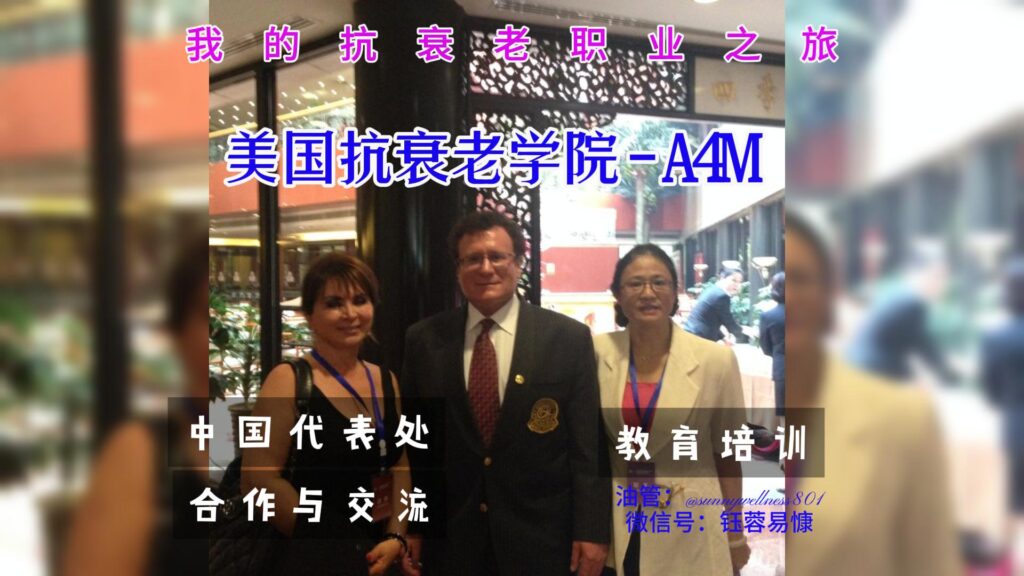Introduction
In 2013, I was responsible for international affairs at the Beijing Jingmeng Stem Cell International Department. That year, under the guidance of our chairman, Dr. Gao Jin, who was an invited speaker, I attended the American Academy of Anti-Aging Medicine (A4M) annual conference in Beijing for the first time. This event left a profound impact on me, introducing me to the comprehensive nine pillars of the anti-aging medical industry. These pillars include Longevity Medicine, Functional Medicine, Chronic Disease Management, Health Management, Nutritional Medicine, Sports Medicine, Regenerative Medicine, Medical Aesthetics, and Advanced Early Detection. Their goal is to extend human health span and youthfulness using cutting-edge preventive and biomedical technologies.
Collaboration and Setbacks
Subsequently, I, along with Dr. Zhang Xiaonan, chairman of Beijing Yulong Shengshi Biotechnology Co., Ltd., visited the anti-aging project leaders at the Beijing Military Medical Academy. They had received significant national funding to support in-depth research in this field. Additionally, I, along with Guo Yi, the head of anti-aging initiatives in China, visited former Minister of Health Yin Dakui. He showed great interest in education on anti-aging lifestyles, deeming it a burgeoning field worth exploring and studying in depth.
At that time, the Beijing representative office of the American Academy of Anti-Aging Medicine had already reached a cooperation agreement with the real estate developer Shanshui Wenyuan to establish a world anti-aging demonstration center in the suburbs of Beijing. This center was designed and planned by Dr. Ronald Klatz, the founder, chief scientist, and chairman of the expert committee of the A4M. Just when everything was progressing smoothly, the cooperation between the two parties abruptly ceased, forcing the project to a halt. Despite this setback, I decided to join this fragmented team, serving as Vice President of Zhonghe Kangshou Beijing Health Science Institute and Deputy Secretary-General of the International Health Services Industry Alliance of the A4M Academic Industrialization Committee. Together with Professor Li Dinggang, the director of the Tumor Gene Therapy Center, and Jia Jungui, the chief technical officer who had a background in management within the General Logistics Department’s medical supplies division, we continued business negotiations, staff training, and relentlessly pursued the enhancement of our knowledge in anti-aging medicine.
International Exchange and Cooperation
In May 2014, Chairman Robert Goldman visited China, and our anti-aging team from Beijing traveled to Yibin to attend the “First International Health and Nutrition Industry Summit Forum.” At the forum, Chairman Goldman delivered a speech on anti-aging, while Nate Key, the head of the British Lifestyle Academy in our team, gave a presentation on lifestyle topics. During the event, I represented our team in reporting on anti-aging projects and cooperation intentions to local leaders and the director of the National Development and Reform Commission.
In December of the same year, a delegation of over 20 people from our Beijing Anti-Aging Base at the Shanshui Wenyuan Beijing Demonstration Base, including former retired director of the Beijing Health Bureau, Professor Jin Dapeng, along with China regional general manager and president Guo Yi and Asia-Pacific chairman Zhu Min, attended the 22nd World Congress on Anti-Aging Medicine at the Venetian Hotel in Las Vegas. This conference gathered numerous medical professionals from around the world. These American medical professionals, if they wish to pursue anti-aging medicine in their field, are required to participate in a two-year online anti-aging continuing education course and attend annual conferences and exams. Our team represented China at the exhibition and held discussions with some U.S.-trained anti-aging doctors about how they could contribute to the anti-aging efforts in China.
Domestic Development
In August 2015, our Beijing team independently hosted the World Anti-Aging Medicine Conference in Beijing. Chairman Robert Goldman personally attended and delivered a keynote speech, attracting a large number of participants. The conference covered various subfields, including speeches by former retired director of the Beijing Health Bureau, Professor Jin Dapeng, and the director of the National Development and Reform Commission, presentations by the American anti-aging medical team, the Indian aromatherapy team, discussions on insurance and health, national health tourism, and strategies for successfully establishing international-level anti-aging health medical centers in China. During the conference, the Anti-Aging Branch of the Chinese Women Doctors Association was also established, with me serving as the executive deputy director.
Challenges and Prospects After the Pandemic
In December 2021, following the pandemic, I attended the 29th World Anti-Aging Congress held at the Venetian Hotel in Las Vegas. Despite the recent reopening, there was still a significant turnout. During the conference, I had the opportunity to take photos and converse with the founder, Chairman Robert Goldman. Regrettably, he informed me that the World Anti-Aging Organization was in the process of being acquired, and he could not make further decisions regarding anti-aging projects in China. Nevertheless, the mission of the anti-aging industry in China remains challenging, and our efforts have never ceased. Stay tuned for the next video to learn about the development overview of anti-aging medicine worldwide.
Conclusion
Anti-aging medicine is not just about extending life but also about improving the quality of life. It has provided significant benefits for the health of myself and my friends. Through this journey, I have deeply realized the importance of anti-aging medicine and hope to continue contributing to the development of this field.

